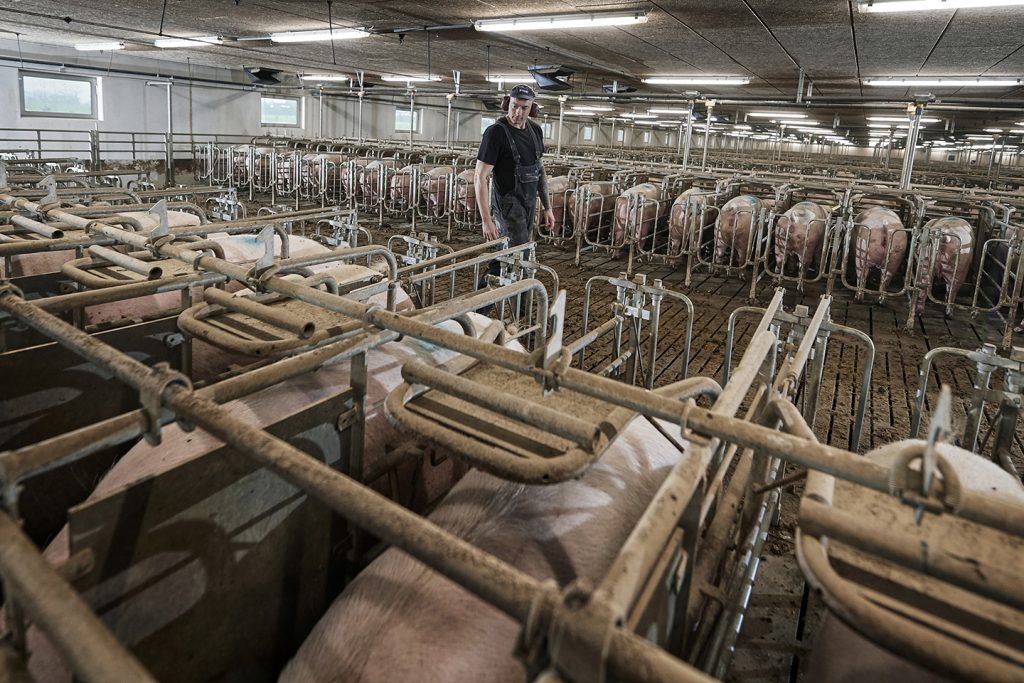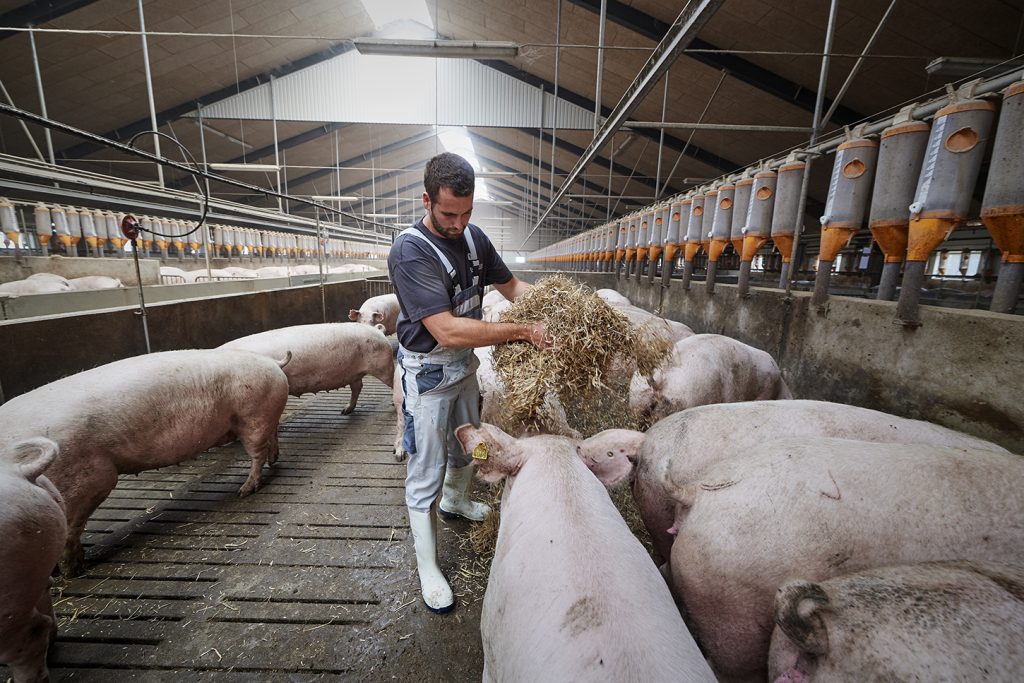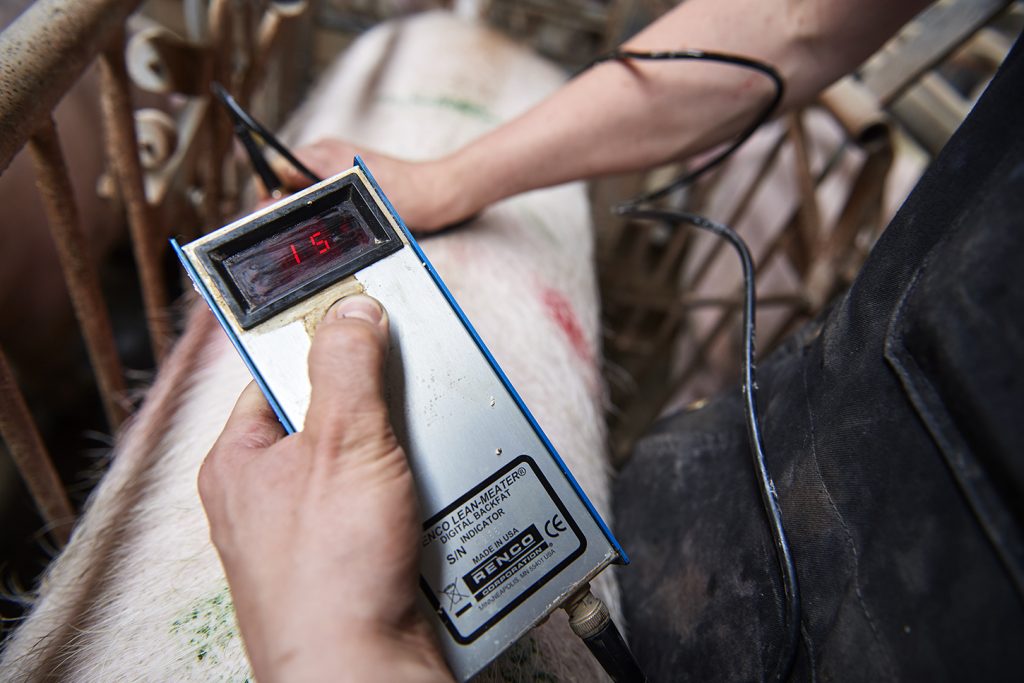Gestation Unit
During gestation, it is important that the sows’ nutrient requirements for foetal development, restoration of body condition and udder growth are met through balanced feeding. The goal is to make sure that the sows achieve an optimum body condition, so they are in good shape for farrowing and the nursing period that follows. To achieve this, you might find it necessary to adjust individual feed rations for sows which are either too thin or too fat.
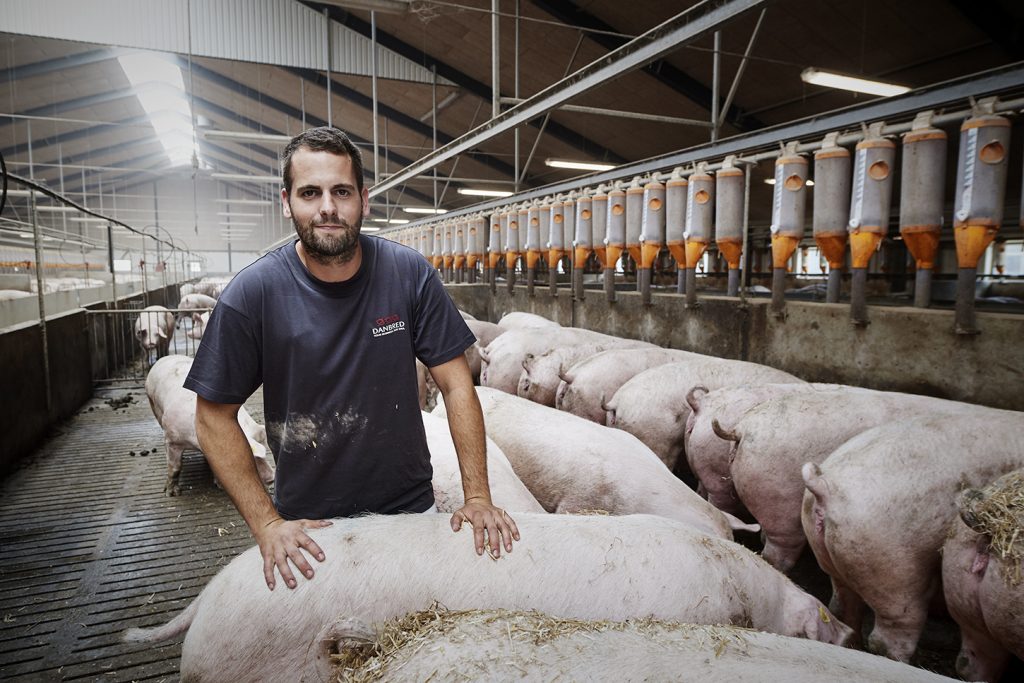
Five days after mating, the implantation period starts. Lasting between three and four weeks, this is when the fertilized eggs form the placenta and it has an enormous impact on the litter size. Because of this, sows and gilts should not be moved around, re-grouped or be exposed to anything that could be stressful during the first four weeks after mating, as this could result in smaller litters.
It is a good idea to put sows and gilts into a vaccination programme, made in collaboration with the herd veterinarian, to reduce the risk of reproductive diseases spreading through the herd.
Everyday tasks in the gestation unit:
Inspect all animals at least once a day to check for any signs of disease.
|
|
|
Between four and six weeks after mating all sows and gilts should be tested for pregnancy.
 |
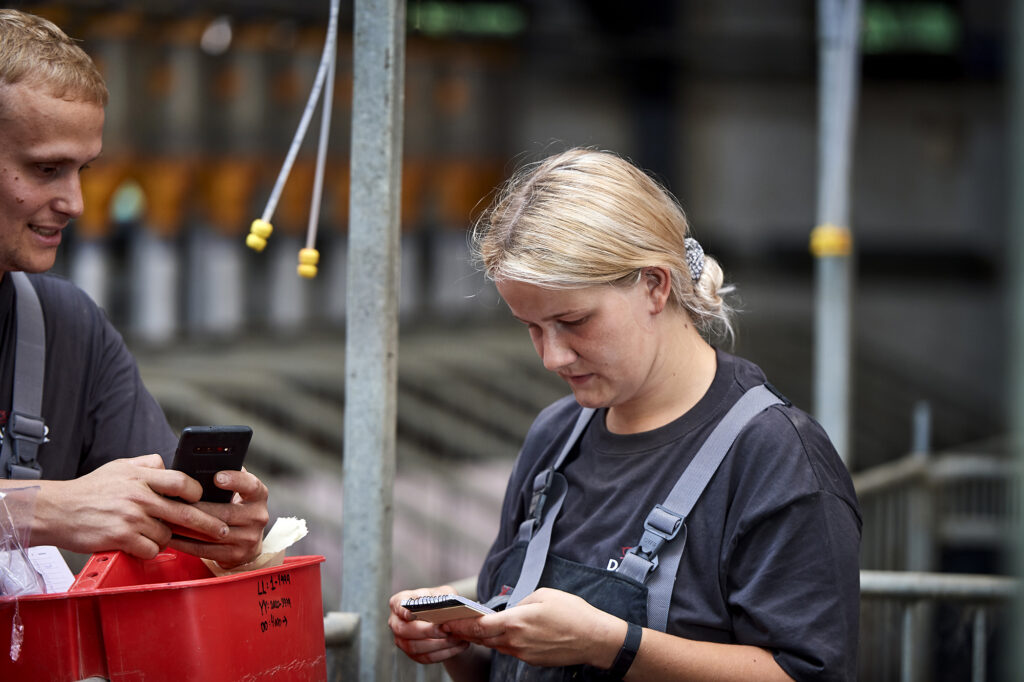 |
Gestation control
Regular testing of all mated animals for pregnancy gives you an insight into the overall fertility of the herd. This enables you to quickly identify empty sows which can be mated again or culled. Regular pregnancy testing will reduce the overall number of non-productive days.
It is a good idea to heat control the sows with a teaser boar every day from day 19 to day 28 after mating. Some sows experience a prolonged return interval, so it is important to do heat control for a few more days. Carry out heat control during a quiet time of the day using an experienced and active boar – and if possible, using different boars.
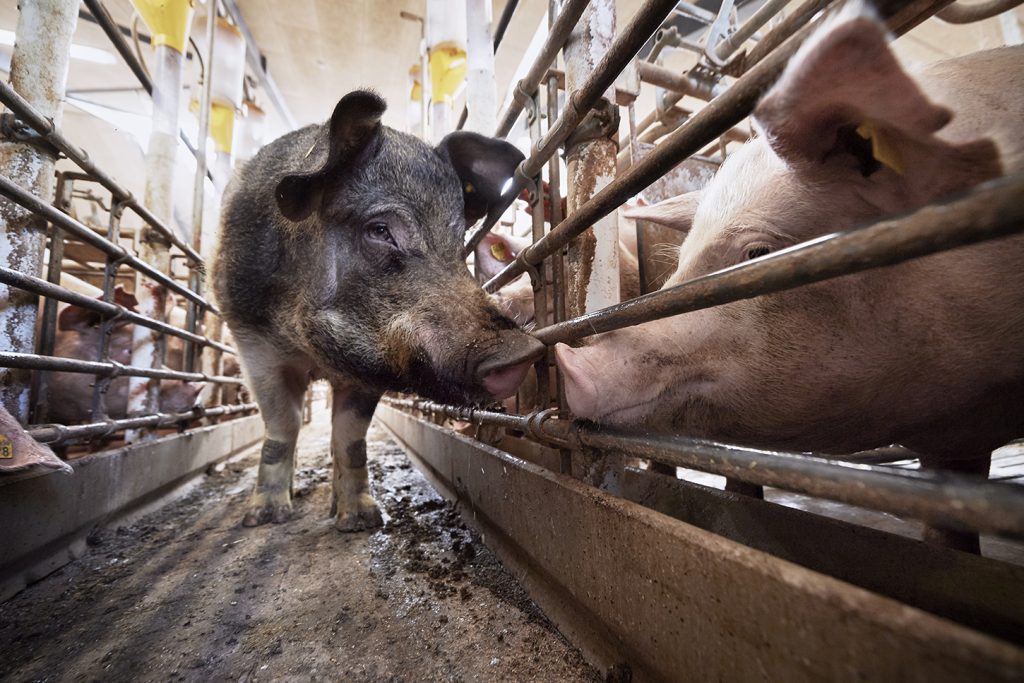 |
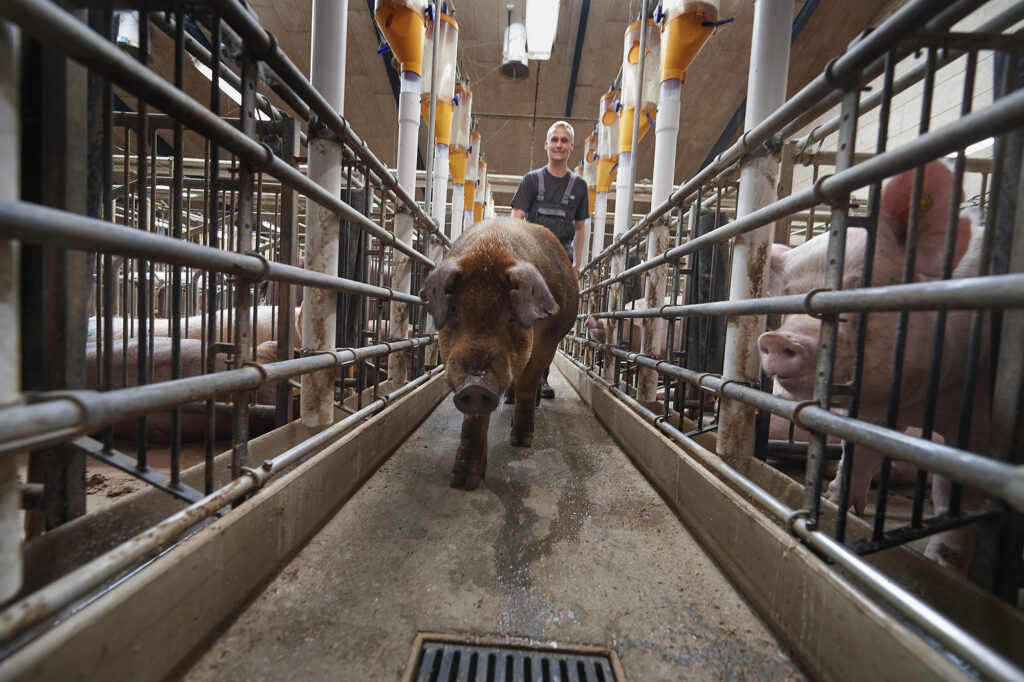 |
Pregnancy control carried out with an ultrasound scanner starts on day 28 until day 42- make sure you scan every single sow.
 |
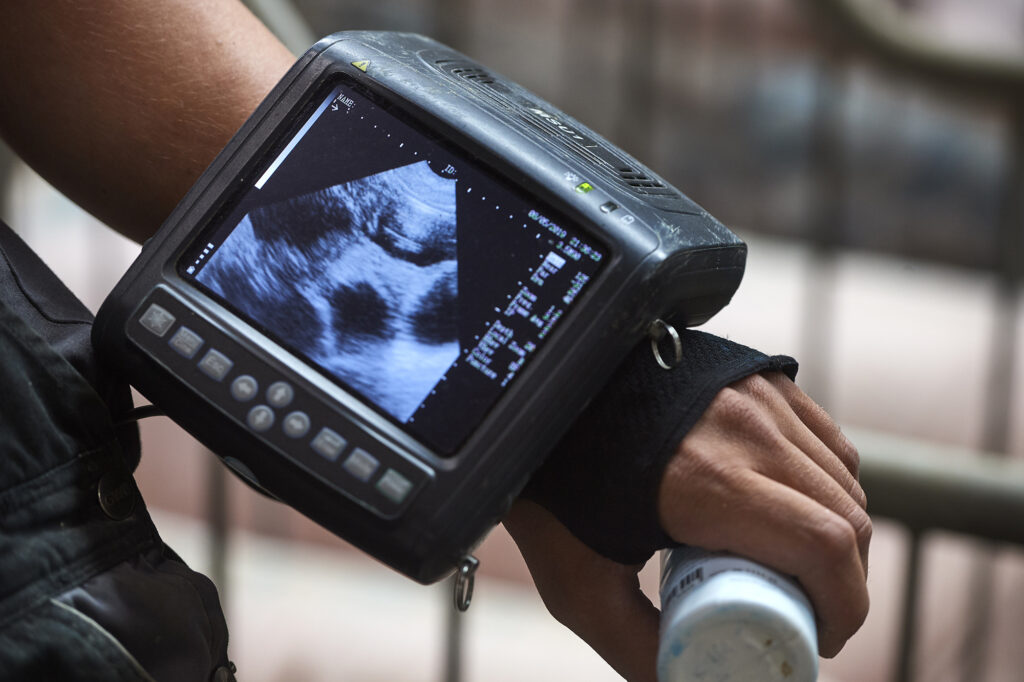 |
If you are in any doubt about the result of a scan, mark the sow and scan her again within a week. If the sow is empty mark her and move her to the mating unit – or prepare her for culling.
 |
 |
Pregnancy control is an important part of the herd operation – and so are due care and proper registration of the results. It is the best way of finding and eliminating the cause of mistakes and hidden diseases.
Vaccination programme
This vaccination strategy is a guideline based on a Danish setup.
| Vaccine | 1st vaccination | 2nd vaccination | Revaccination | Comment |
|---|---|---|---|---|
| Glässer’s disease | 5½ months | 3 weeks after 1st vaccination | 2-4 weeks prior to farrowing. | Vaccination is given prior to delivery: 2 vaccinations 3 weeks apart. Vaccinations should be finished 2 weeks before delivery. |
| Porcine Parvo Virus – PPV | 5½ months | 3 weeks after 1st vaccination | At weaning. | |
| Erysipelas | 5½ months | 3 weeks after 1st vaccination | 3 weeks prior to farrowing. | Consider to give your youngest animals a boost during the quarantine period. |
| Porcine circovirus type 2 – PCV2 | 5½ months | 3 weeks after 1st vaccination | 2-3 weeks prior to farrowing. | |
| Influenza | 5½ month | 3 weeks after 1st vaccination | It is important to know which strain you have in the herd, frequent testing should be performed to ensure an efficient vaccination protocol. | |
| Clostridial diarrhoea A+C and E.coli | 6 weeks prior to first farrowing | 2 weeks prior to first farrowing | 2 weeks prior to farrowing | |
| Mycoplasma | On entry to quarantine | 2 weeks after 1st vaccination | Can be given as a one-shot, depending on the type of vaccine. | |
| PRRS US or PRRS EU* | On entry into quarantine | 3 weeks after 1st vaccination | This vaccination assumes that an inactivated/killed vaccine is used. | |
| Rhinitis (atrophic) | On entry into quarantine | 3 weeks after 1st vaccination | 3 weeks prior to farrowing. | |
| Actinobacillus Pleuropneumonia – App | On entry into quarantine | 3 weeks after 1st vaccination | ||
| * If you use activated/live PRRS vaccines, you should administer the vaccination once at the beginning of the animals’ quarantine period. The use of live vaccines should be followed by a quarantine period of at least 12 weeks. |
||||
Feeding from mating until farrowing
During gestation it is important to meet the sows’ nutrient requirements for foetal development and udder growth through balanced feeding. It is crucial to restore body condition after weight loss from the farrowing unit as a negative energy balance increases the risk of abortion. We recommend adding raw ingredients rich in fibre to the gestation feed.
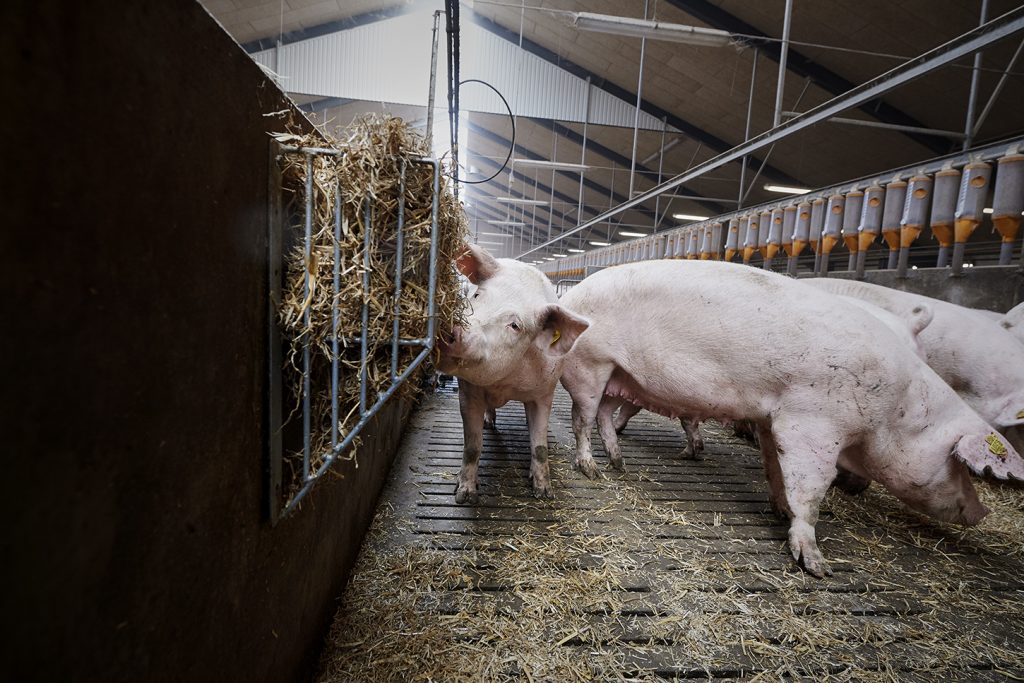
The basic principle for feeding in the gestation unit:
- Sows which have lost a lot of weight during the previous nursing period will consume more feed. We recommend restoring good body condition within the first four to five weeks after mating.
- We do not recommend feeding gilts ad libitum for the first four weeks after mating. Studies have shown that high weight gain during the first part of gestation increases the risk of abortion among gilts. So, we recommend feeding small gilts around 2.2 kg per day and heavy gilts around 2.4 kg per day.
- The environment (temperature, draught and humidity) can have a big influence on feed consumption.

To reach the optimum weight at farrowing, it is essential to focus on feeding during the four weeks before farrowing.
Feeding method
It is recommended that gestating sows are fed according to their individual needs.
Group feeding the sows places a big demand on herd managers, so if group feeding is the only option, it is vital to focus on:
- Making sure sows are grouped according to body condition
- Thin sows are penned individually
- Ensuring body condition remains homogeneous among the sows in each group

Body condition score
It is important to focus on body condition around farrowing. Group the sows according to their body condition.
Different methods can be used for the evaluation of body condition:
- Visual evaluation – simply look at each sow
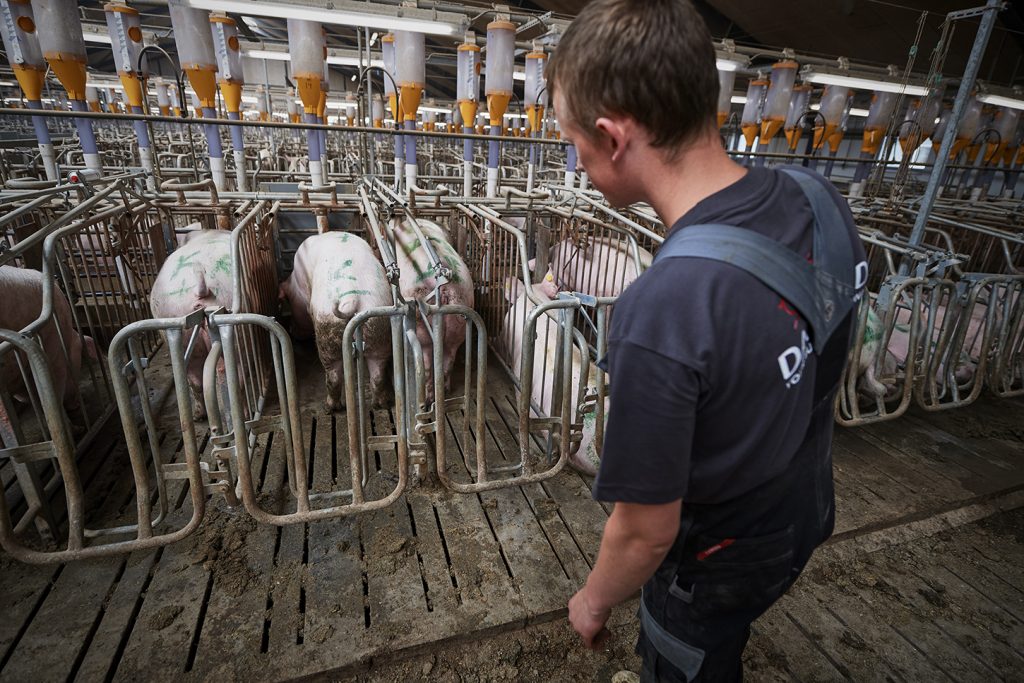
- Palpation – use your hands to check the body
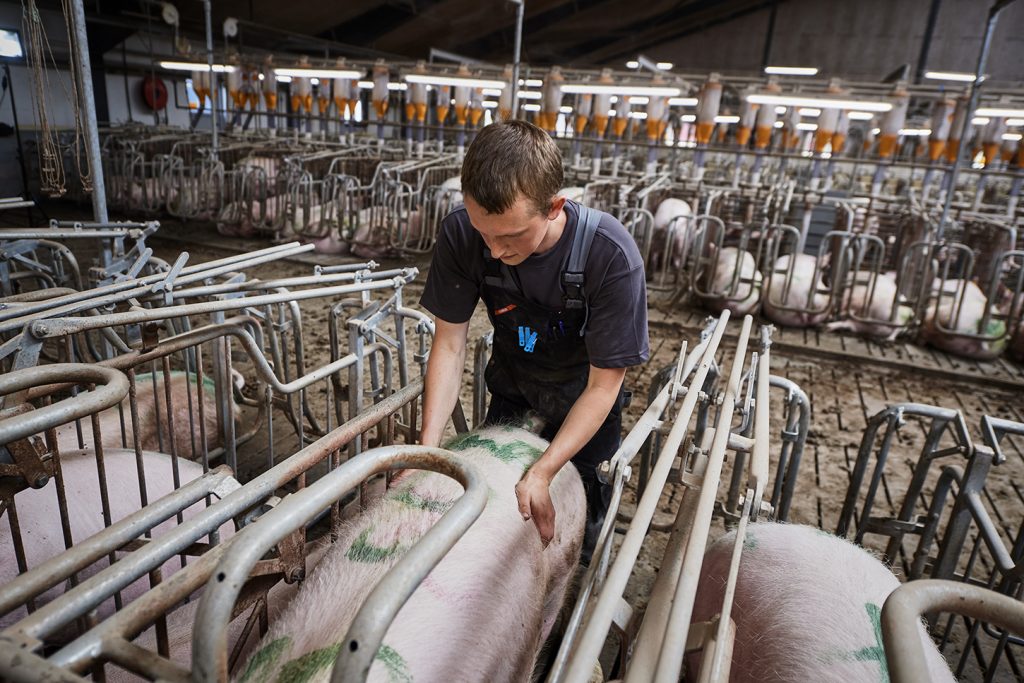
- Measurement of the backfat thickness
|
|
|
We always recommend using a combination of these methods when assessing body condition – you should never rely on visual evaluation alone.
Carry out a body condition evaluation for all sows at least four times during the production cycle:
- At the time of weaning or mating: This evaluation will pinpoint which feeding curve each sow should follow during early gestation.
- At around day 30 of gestation: This evaluation makes it possible to change as many sows as possible to the normal feeding curve to save on feed and costs, and to avoid skinny sows becoming too fat.
- At 70 days of gestation: This evaluation will indicate whether the feeding curves are optimal, and whether the remaining part of thin sows can follow the normal feeding curve until farrowing.
- Just before farrowing: this evaluation will indicate if the chosen strategy was correct, and whether the feeding curves should be revised. It also provides information to decide if additional measurements should be taken to support body condition during lactation.
At the time of farrowing, you want as many sows as possible to have an average body condition with a backfat thickness of 14-17 mm.
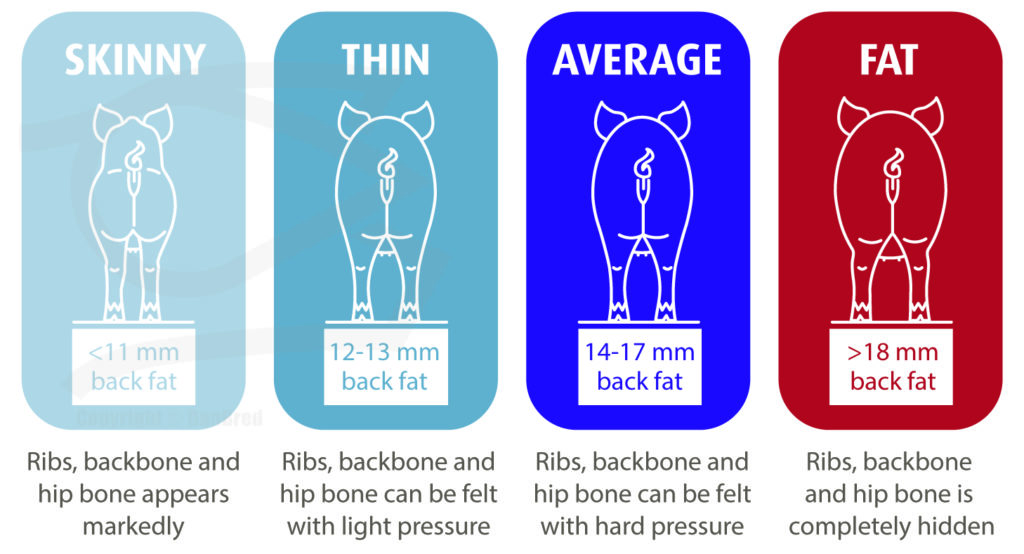
Recommended feed allowance during gestation
| Guideline feed curves for sows during gestation (kg per day)¹ | ||||
|---|---|---|---|---|
| Days post-mating | Guideline feed allowance based on body condition score and backfat thickness at weaning or mating | |||
| Skinny < 12 mm | Average 12-14 mm | Fat > 14 mm | Gilts | |
| 1-28 | 4.3 | 2.9 | 2.4 | 2.2 – 2.4 |
| 29-84 | 4.3 | 2.3 | 2.3 | 2.4 – 2.6 |
| 85-110 | 3.9 | 3.4 | 3.4 | 3.3 |
| 111-117* | 3.7 | 3.7 | 3.7 | 3.7 |
| 1 Daily feed allowances are based on a diet with an energy density of 9.5 MJ NE/12.5 MJ ME/1.05 EW with a content of around 4.12g SID lysine per kg feed.* A skinny sow should be moved to the average curve as soon as the body condition is re-established, otherwise there is a risk of sows becoming too fat. | ||||
Feed curves for sows during gestation

See more details on feeding gestating sows here.

